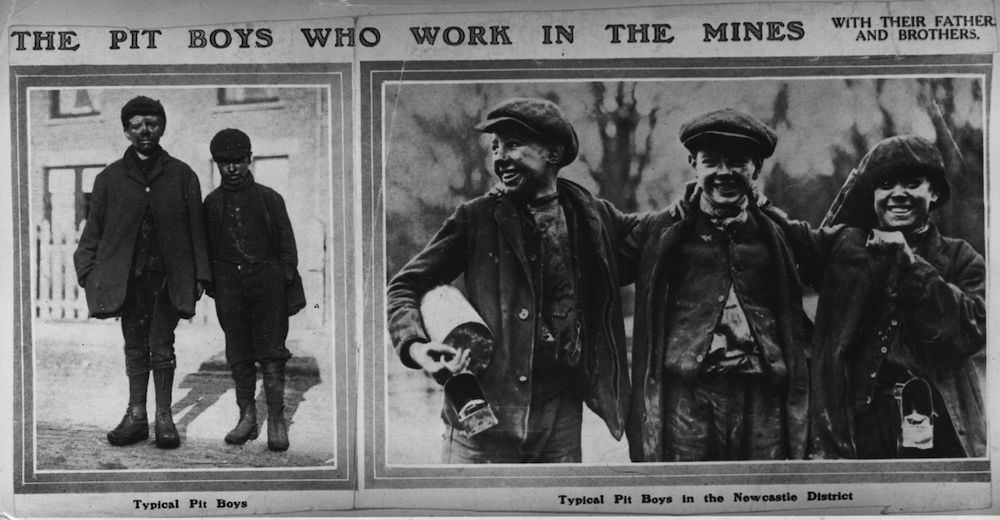“Can you taste it Bruce? Can you taste the filth, the dirt, the oily blackness of that fossil fuel in our mouth as you choke and gag and spit it out?” – Irvine Welsh, Filth

February 1908: A crowd of miners waiting anxiously for survivors of a disaster at Hampstead Colliery to surface from the coal face. (Photo by Topical Press Agency/Getty Images)
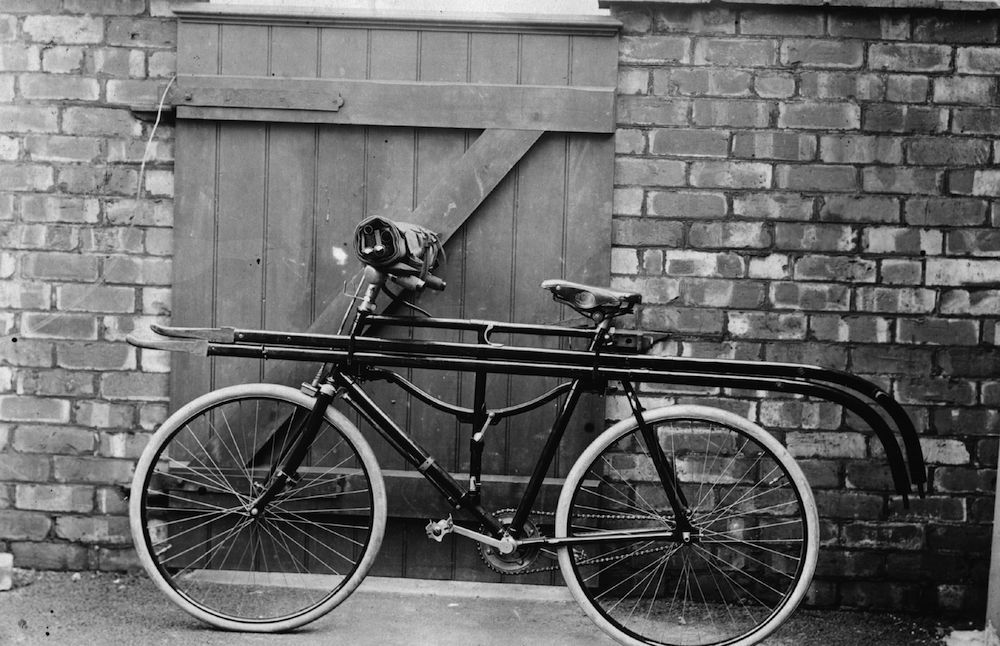
April 1908: A bicycle which contains a stretcher and is part of a school for emergency coal mining rescue. (Photo by Topical Press Agency/Getty Images)
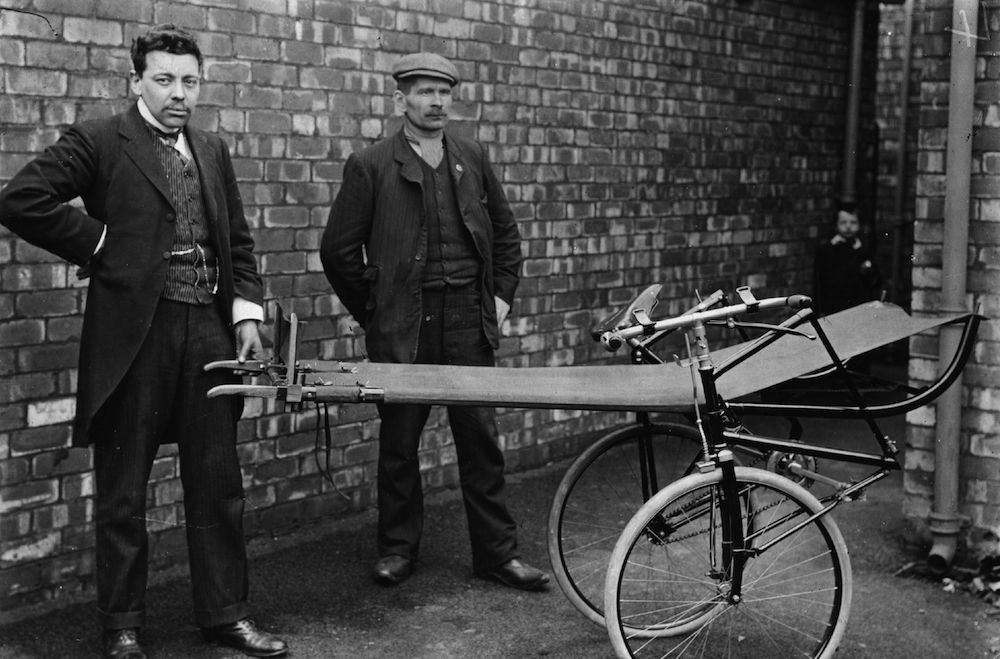
April 1908: A cycle ambulance on display at a coal mining rescue school. (Photo by Topical Press Agency/Getty Images)
“The sea raised its great wings, coal black smoke arose from Vesuvius into the blue sky…” – Hans Christian Andersen’s account of Vesuvius , 1834
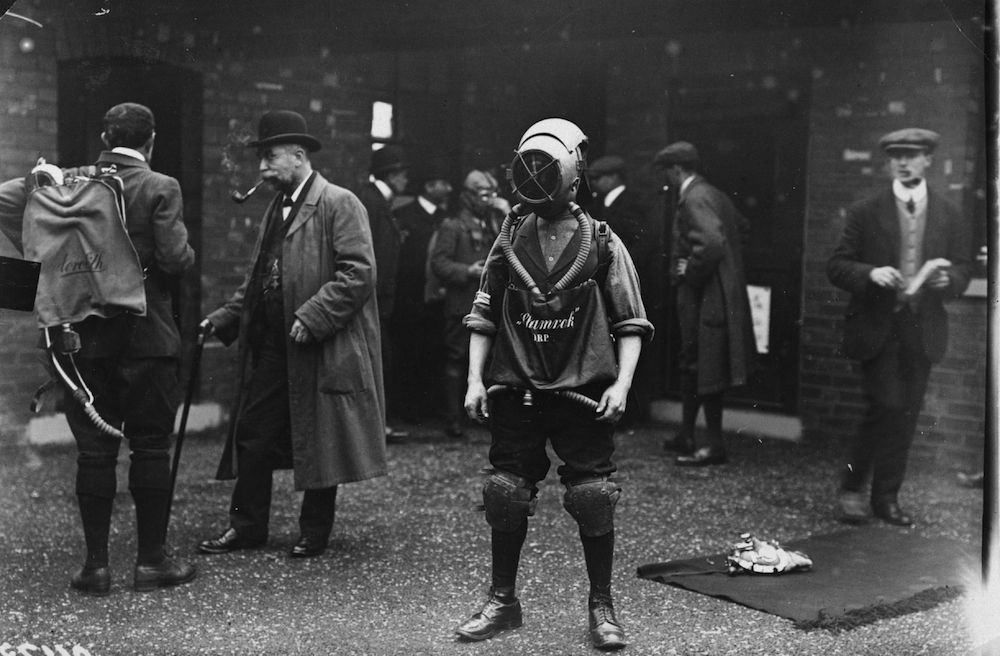
October 1908: A man demonstrating Shamrock safety gear for the coal mining industry. (Photo by Topical Press Agency/Getty Images)
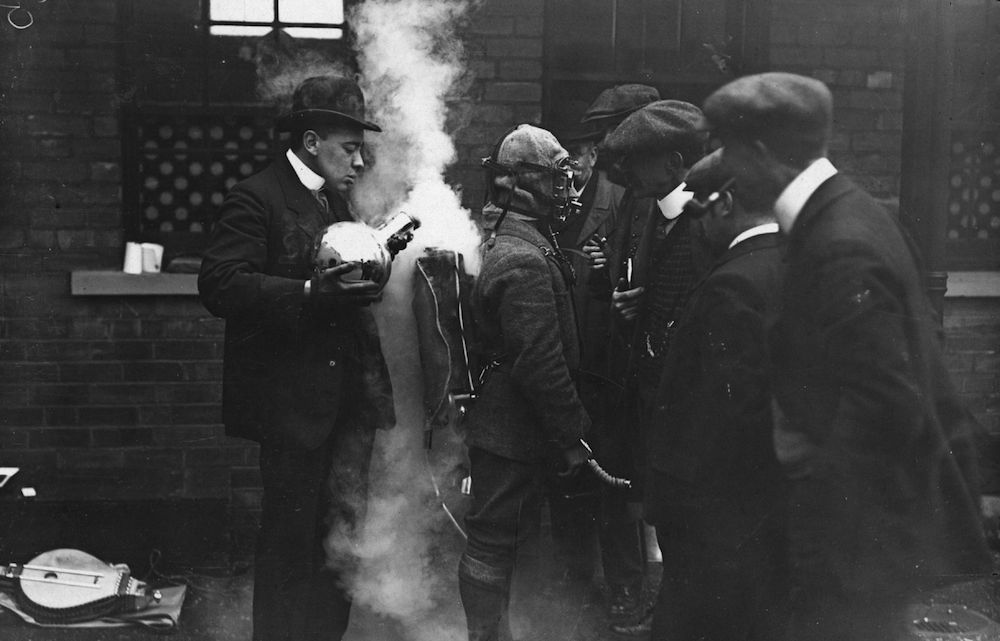
October 1908: Workmen attending a demonstration of Simons safety apparatus, for use in the coal mining industry. (Photo by Topical Press Agency/Getty Images)
The brook ran under the alder trees, scarcely soiled by these small mines, whose coal was drawn to the surface by donkeys that plodded wearily in a circle round a gin. And all over the countryside were these same pits, some of which had been worked in the time of Charles II, the few colliers and the donkeys burrowing down like ants into the earth, making queer mounds and little black places among the corn-fields and the meadows. And the cottages of these coal-miners, in blocks and pairs here and there, together with odd farms and homes of the stockingers, straying over the parish, formed the village of Bestwood – DH Lawrence, Sons And Lovers
, 1913
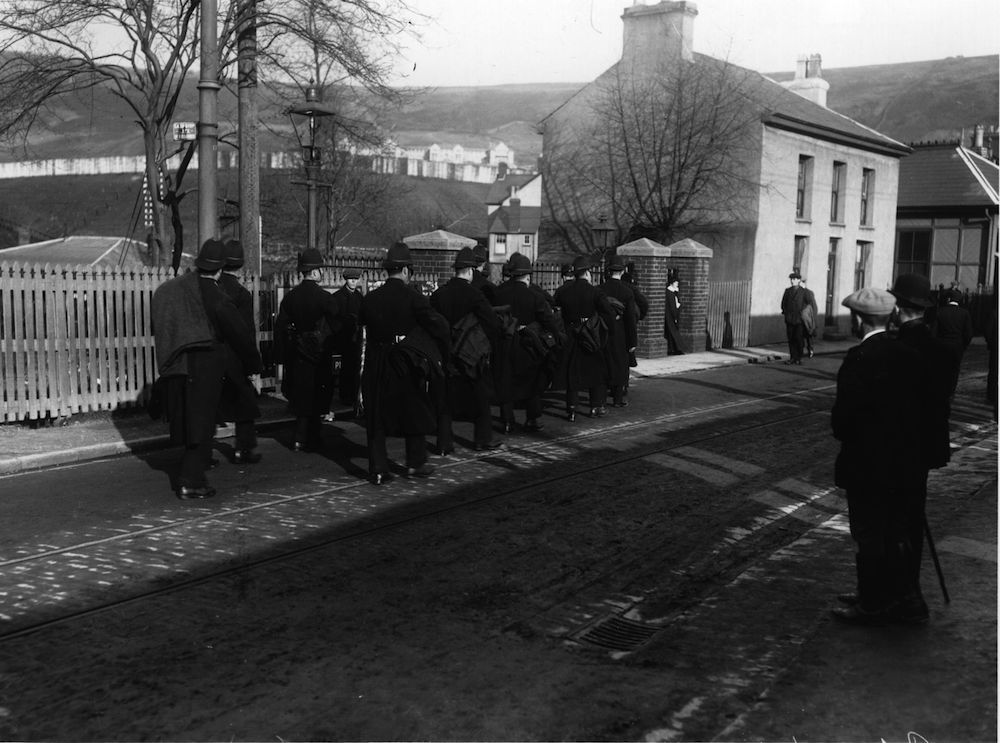
1st November 1910: A group of policemen, carrying their bedding, prepare for a long fight during the coal strike in Tony Pandy. (Photo by Hulton Archive/Getty Images)
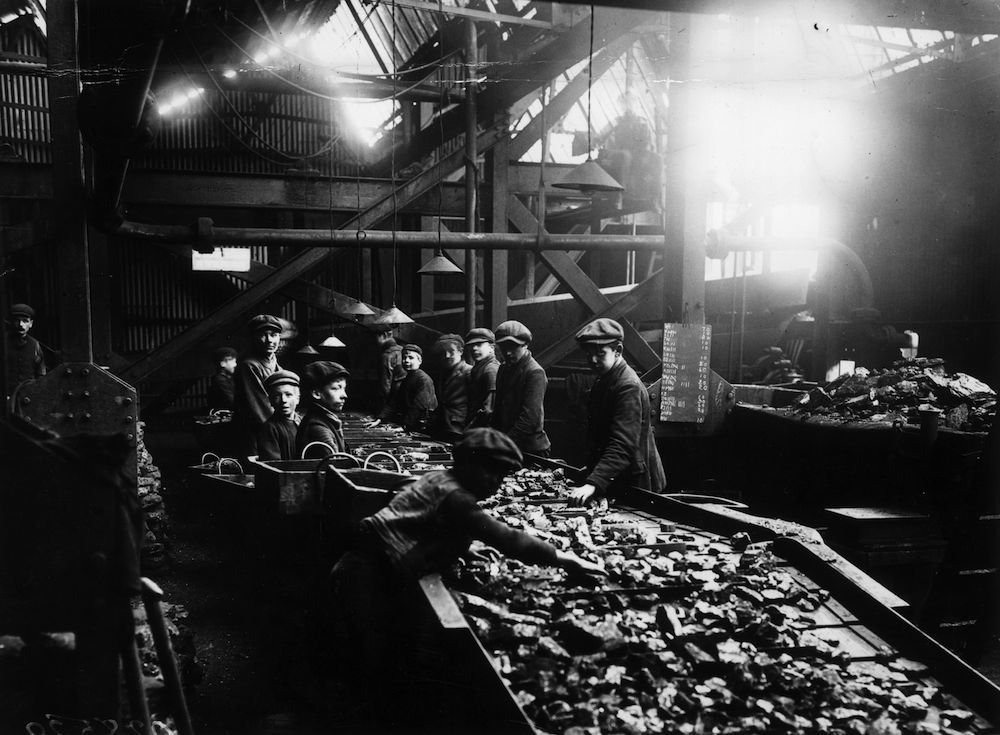
December 1910: Young boys at work at the troughs used for cleaning coal at a pit in Bargoed, South Wales. (Photo by Topical Press Agency/Getty Images)
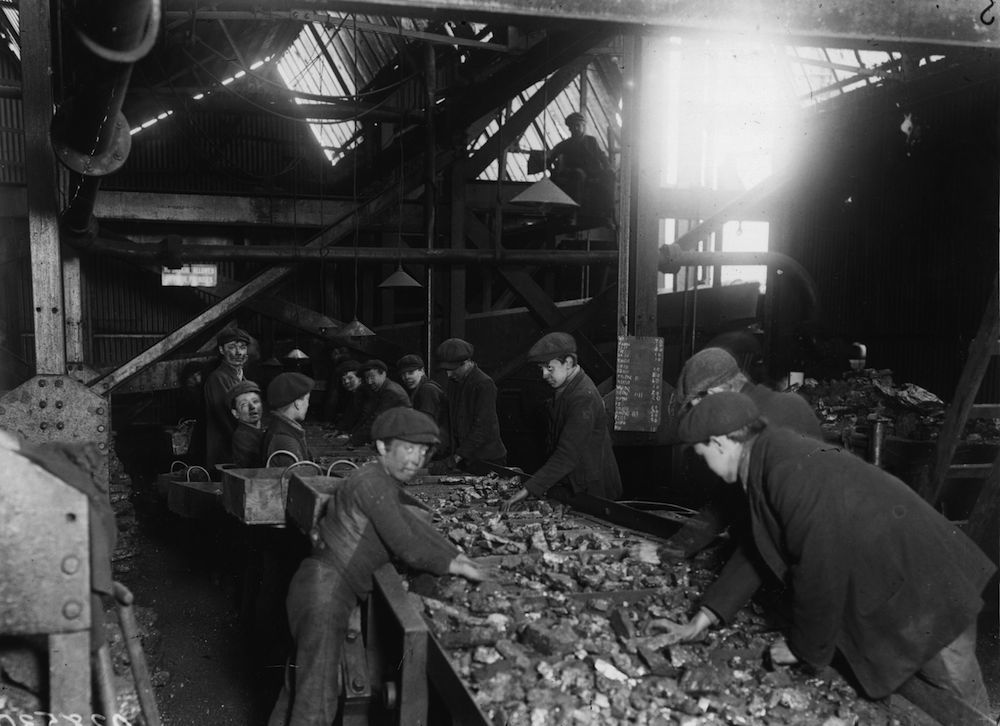
December 1910: Miners are pictured down the mine at Bargoed, near Cardiff, washing the extracted coal in troughs. (Photo by Topical Press Agency/Getty Images)
When the man recognized a pit. His despair returned. What was the good? There would be no work. Instead of turning towards the buildings he decided at last to ascend the pit bank, on which burnt in iron baskets the three coal fires which gave light and warmth for work. The labourers in the cutting must have been working late; they were still throwing out the useless rubbish. Now he heard the landers push the wagons on the stages. He could distinguish living shadows tipping over the trains or tubs near each fire – Germinal by Emile Zola, 1885
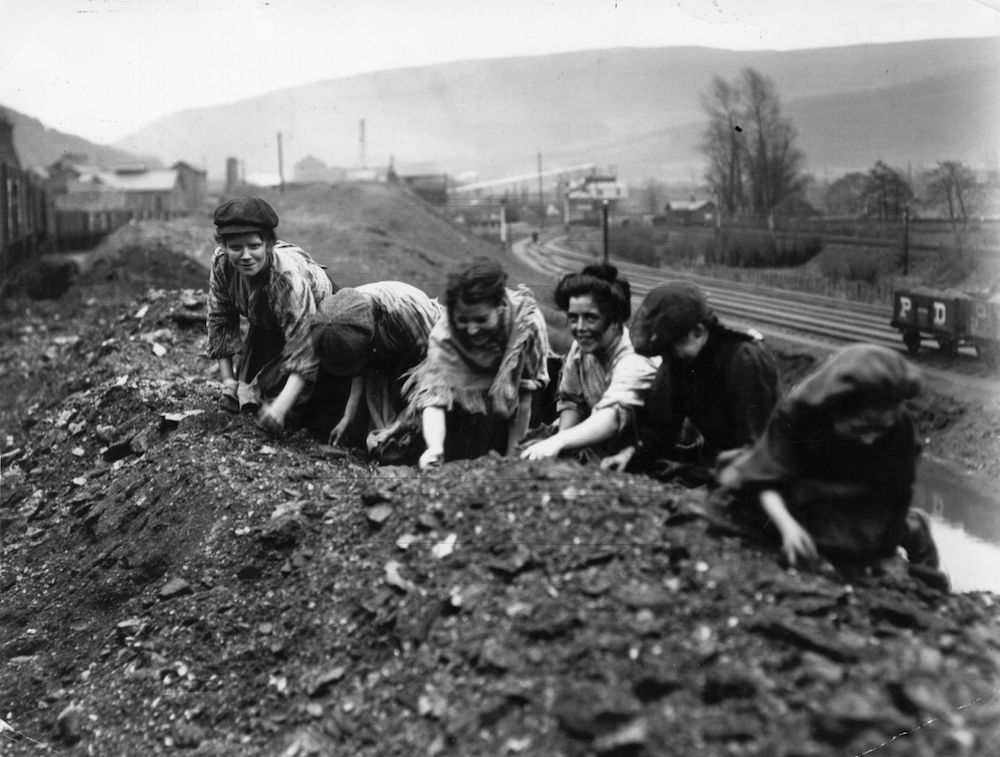
Women and children scavenging for coal from slag heaps near closed mines during the coal strike. (Photo by Topical Press Agency/Getty Images)
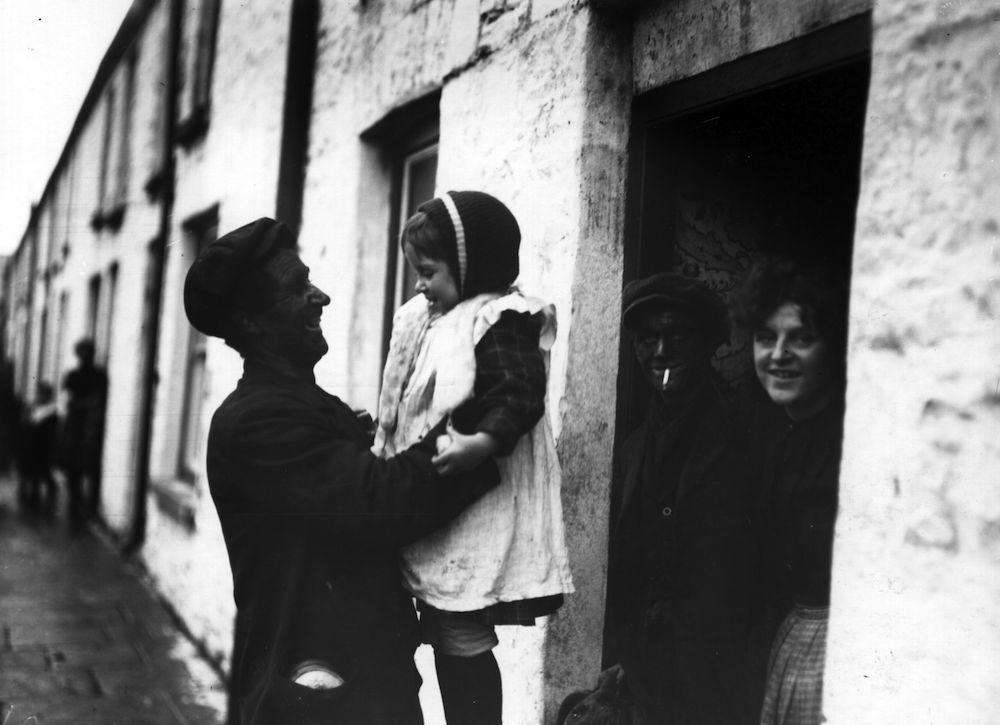
February 1912: A miner lifts up his daughter as he returns home from work at a pit in Wigan, during the coal strike crisis. (Photo by Topical Press Agency/Getty Images)
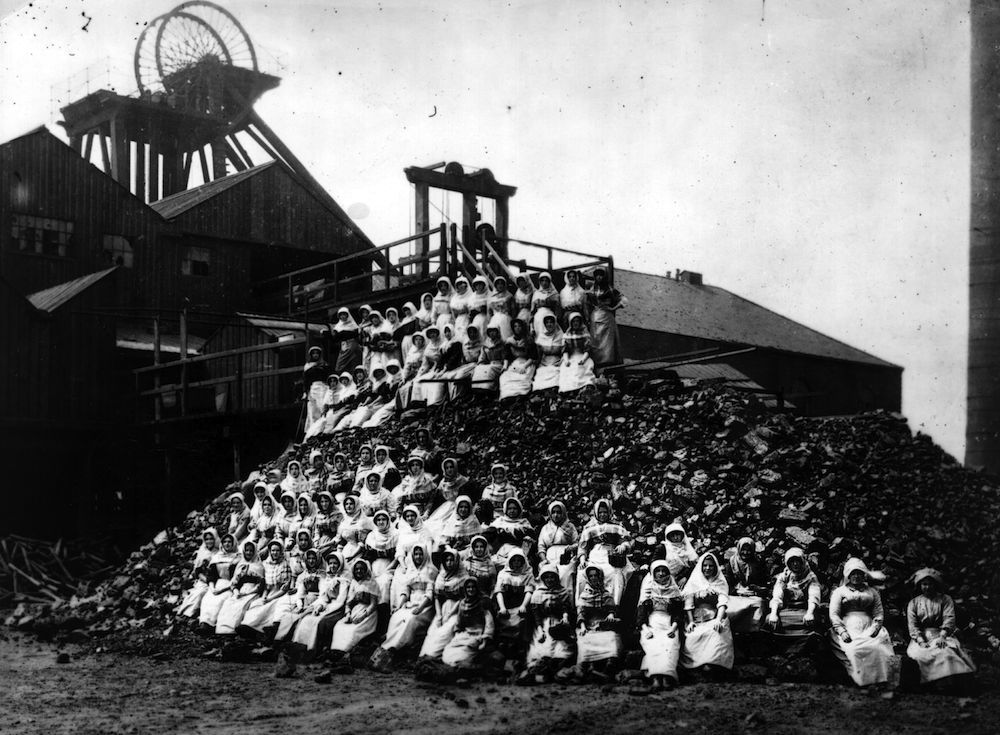
February 1912: Women mine workers sitting on a pile of coal during the coal strike in Wigan. (Photo by Hulton Archive/Getty Images)
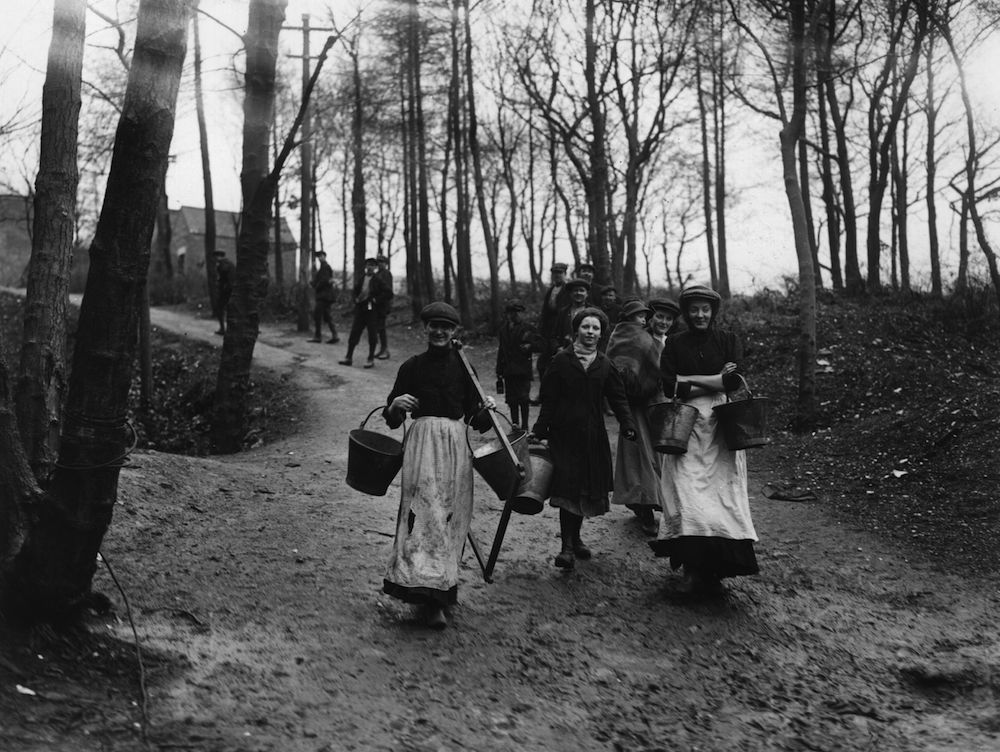
19th February 1912: Women in Wigan setting out to look for coal, during the coal strike crisis. (Photo by Topical Press Agency/Getty Images)
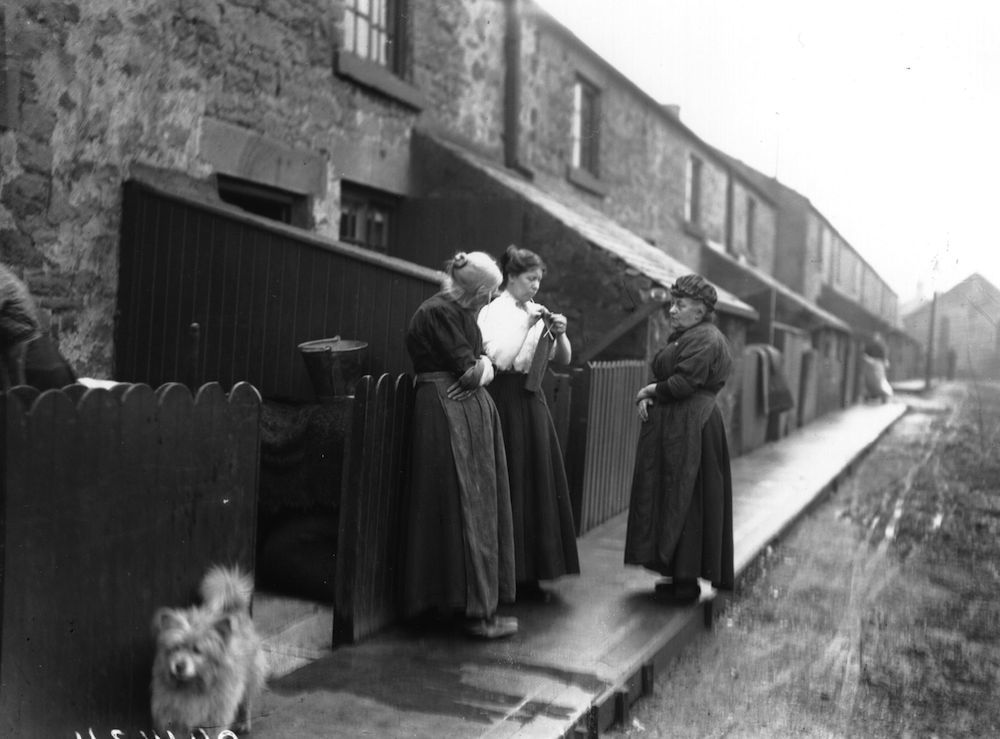
February 1912: Miners’ wives in Wigan, a coal-mining centre since the 14th century, discuss the Coal Strike. (Photo by Topical Press Agency/Getty Images)
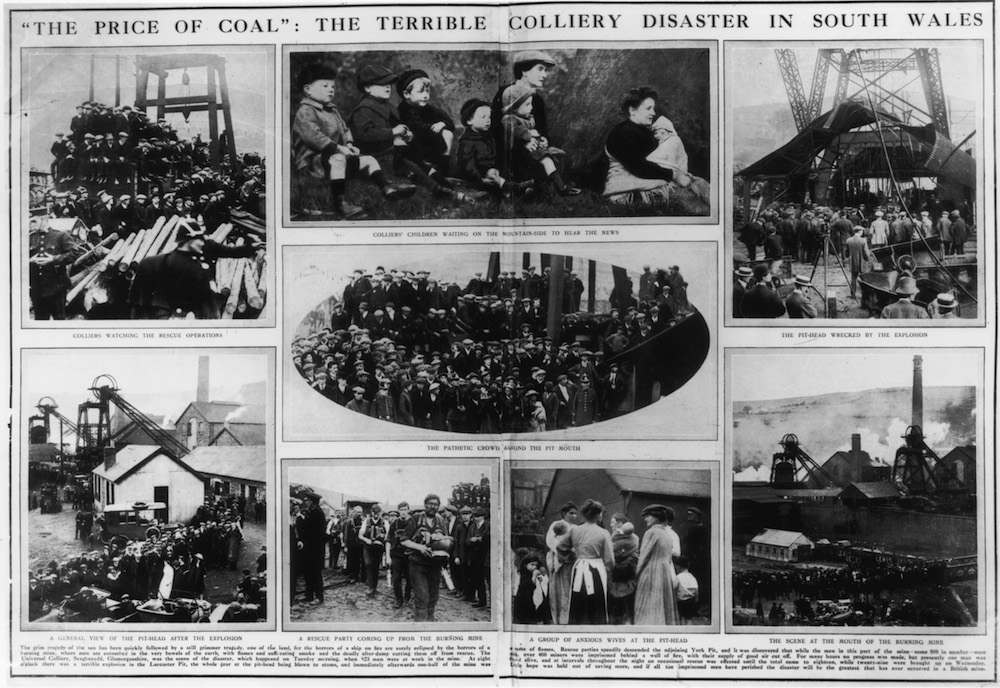
A double-page newspaper report, published 18th October 1913, on Britain’s worst-ever mining disaster at the Universal Colliery at Senghenydd, Glamorganshire, South Wales. 439 miners were killed in an explosion and fire at the mine on 14th October 1913. The article includes pictures of anxious relatives waiting for news, along with views of the wrecked pit-head (top right) and a rescue party emerging from the burning mine (bottom, centre-left). (Photo by Hulton Archive/Getty Images)
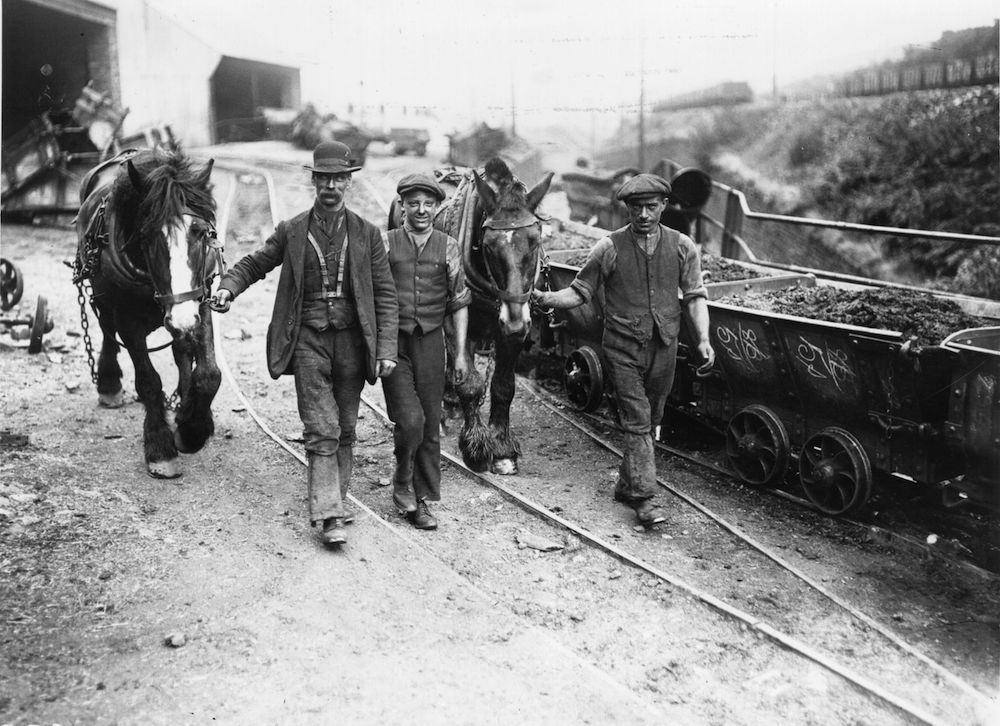
1st August 1915: Men with their ponies on the way to the pit mouth after the settlement of the 1915 coal strike. (Photo by Topical Press Agency/Getty Images)

25th April 1917: A motor coal barge on Regent’s Canal unloading its cargo. (Photo by Topical Press Agency/Getty Images)
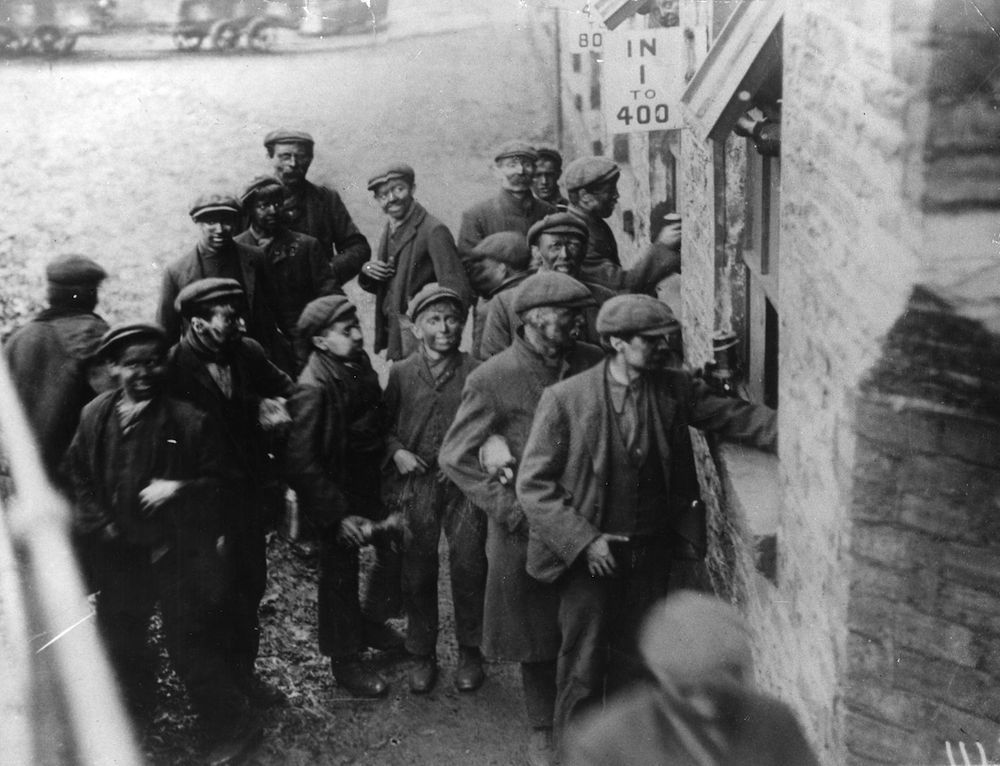
circa 1920: A group of miners receiving their wages after finishing a shift in the coal mine. (Photo by Hulton Archive/Getty Images)

1920: W Davidson, a young miner at the Lynemouth colliery of the Ashington Coal Company. Davidson later became manager at the colliery after attending the company’s Continuation School. The school was part of a company policy to fill its administrative posts with workers who had started down the pit. (Photo by Central Press/Getty Images)

January 1921: Children, wearing clogs, gathering coal during the coal stike. (Photo by Topical Press Agency/Getty Images)
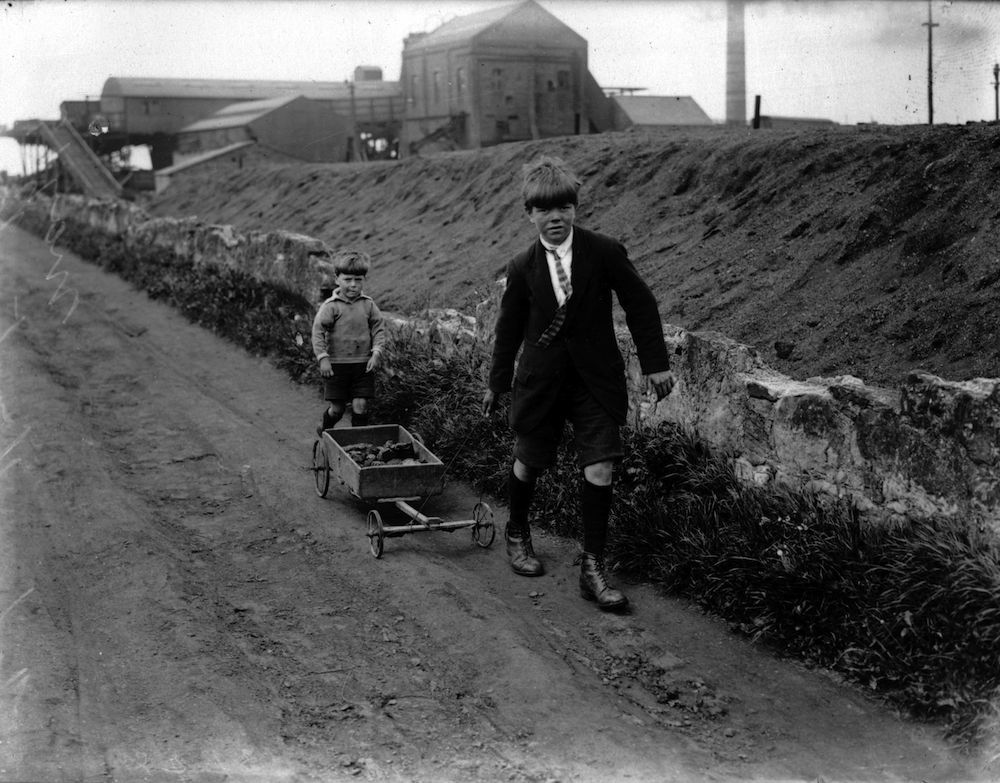
May 1926: Boys bring home the family coal rations from a colliery near Edinburgh, during the General Strike of 1926. (Photo by Central Press/Getty Images)

circa 1921: An enterprising tradesman’s signs during the 1921 coal strike. (Photo by Topical Press Agency/Getty Images)

8th May 1926: Sailors and students working at Neasden Power Station during the General Strike. (Photo by H. F. Davis/Topical Press Agency/Getty Images)
Would you like to support Flashbak?
Please consider making a donation to our site. We don't want to rely on ads to bring you the best of visual culture. You can also support us by signing up to our Mailing List. And you can also follow us on Facebook, Instagram and Twitter. For great art and culture delivered to your door, visit our shop.
